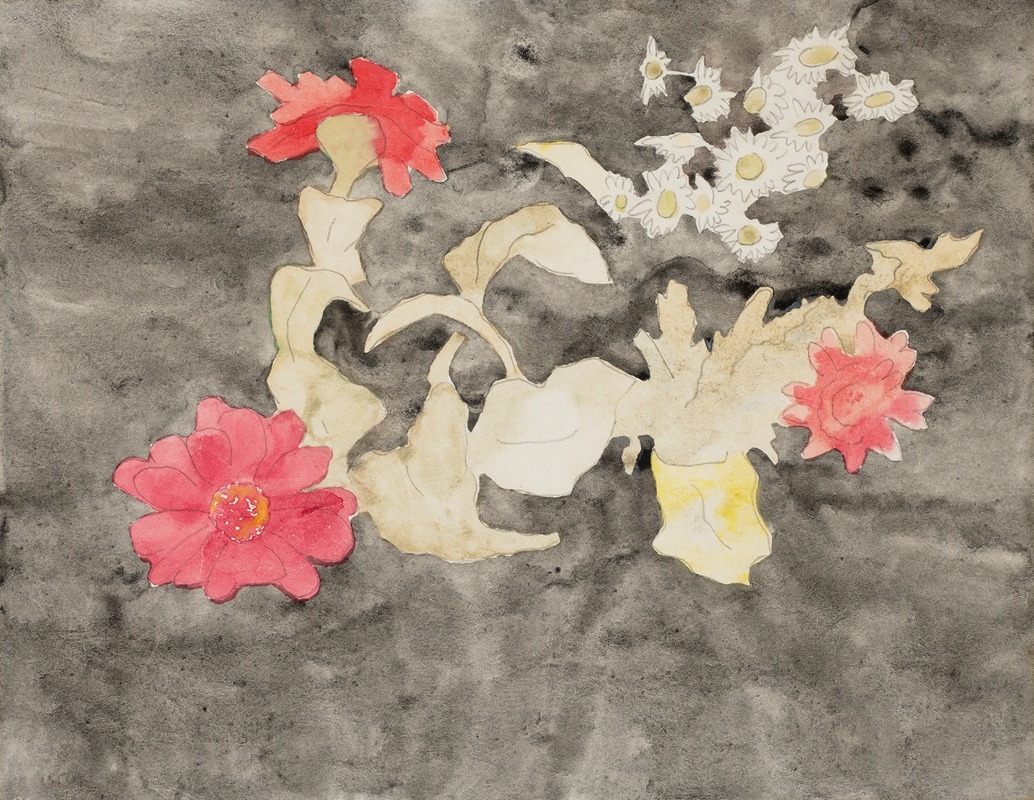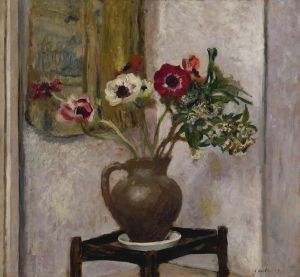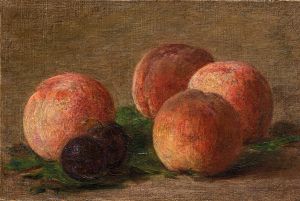
Zinnias
A hand-painted replica of Charles Demuth’s masterpiece Zinnias, meticulously crafted by professional artists to capture the true essence of the original. Each piece is created with museum-quality canvas and rare mineral pigments, carefully painted by experienced artists with delicate brushstrokes and rich, layered colors to perfectly recreate the texture of the original artwork. Unlike machine-printed reproductions, this hand-painted version brings the painting to life, infused with the artist’s emotions and skill in every stroke. Whether for personal collection or home decoration, it instantly elevates the artistic atmosphere of any space.
"Zinnias" is a watercolor painting by the American artist Charles Demuth, created in 1914. Demuth was a prominent figure in the early 20th-century American art scene, known for his contributions to the Precisionist movement, which emphasized clean lines and geometric forms. However, "Zinnias" is more closely associated with his work in floral still lifes, showcasing his mastery in watercolor techniques and his ability to capture the delicate beauty of flowers.
Charles Demuth was born in 1883 in Lancaster, Pennsylvania, and studied at the Pennsylvania Academy of the Fine Arts in Philadelphia. He later continued his studies in Paris, where he was influenced by the avant-garde movements of the time, including Cubism and Fauvism. Despite these influences, Demuth developed a unique style that often combined elements of realism with modernist abstraction.
"Zinnias" exemplifies Demuth's skill in watercolor, a medium that requires precision and control due to its fluid and transparent nature. The painting depicts a bouquet of zinnias, a flower known for its vibrant colors and varied forms. Demuth's composition is characterized by its attention to detail and the subtle interplay of light and shadow, which gives the flowers a lifelike quality. The use of watercolor allows for a soft blending of colors, enhancing the natural beauty of the zinnias.
In "Zinnias," Demuth employs a delicate balance between realism and abstraction. While the flowers are rendered with a high degree of detail, the background is often more abstract, allowing the viewer to focus on the intricate forms and colors of the zinnias themselves. This approach reflects Demuth's interest in exploring the boundaries between representation and abstraction, a theme that recurs throughout his body of work.
Demuth's floral paintings, including "Zinnias," were part of a broader trend among American artists in the early 20th century who sought to elevate still life painting to a new level of artistic expression. By focusing on everyday subjects like flowers, these artists were able to explore complex themes of beauty, transience, and the passage of time. Demuth's work in this genre is notable for its technical precision and its ability to convey a sense of intimacy and immediacy.
Throughout his career, Demuth maintained a close connection to his hometown of Lancaster, often drawing inspiration from its landscapes and architecture. Despite his travels and exposure to international art movements, he remained deeply rooted in the American artistic tradition. His work, including "Zinnias," reflects a synthesis of European modernism and American realism, making him a key figure in the development of modern American art.
"Zinnias" is part of Demuth's larger oeuvre of floral watercolors, which continue to be celebrated for their beauty and technical mastery. Today, his works are held in major collections, including the Metropolitan Museum of Art and the Whitney Museum of American Art, where they continue to be studied and admired by art enthusiasts and scholars alike.


















